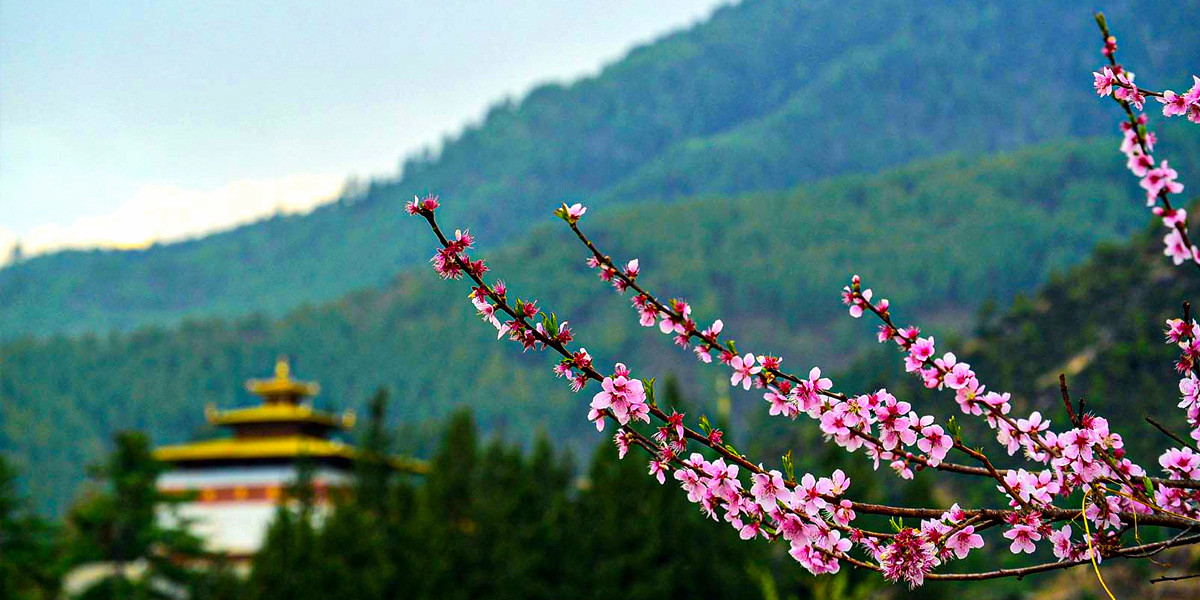Cultural Tours
Cultural tours in Bhutan during the monsoon season offer a special chance to explore the country’s deep-rooted traditions and vibrant heritage with fewer crowds, allowing for a more intimate experience. Since rain often falls in the afternoon, it's smart to plan activities at a relaxed pace earlier in the day, ensuring you can enjoy all the key sights without disruption.
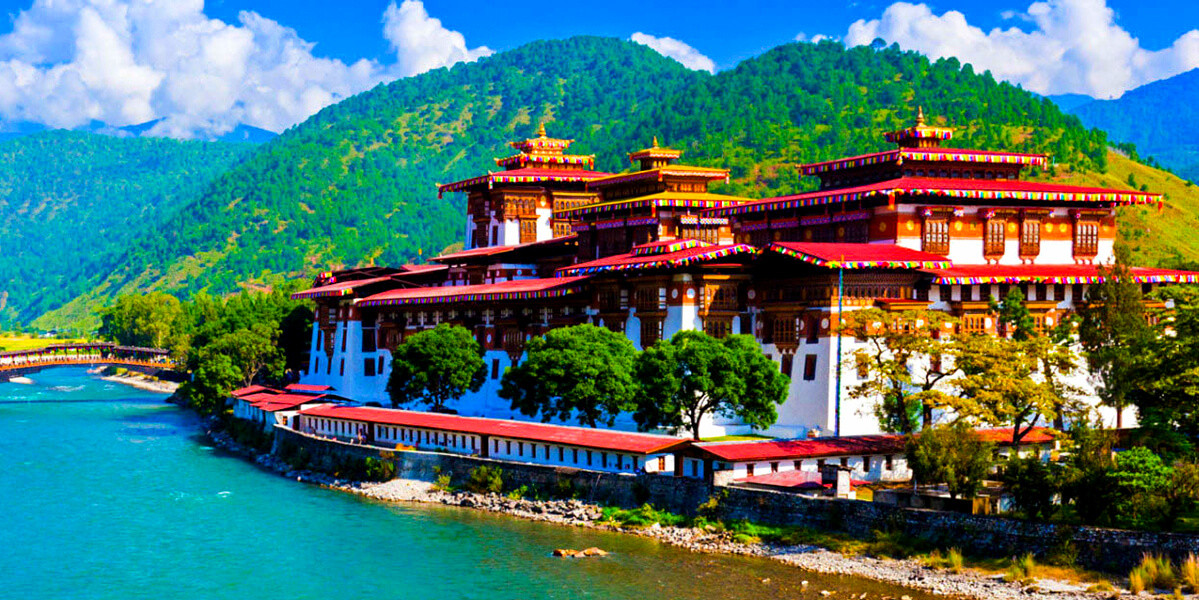
-
Dzong Visits: Dzongs are traditional fortified monasteries that serve as both religious and administrative centers. Key dzongs to visit include the impressive Punakha Dzong, the second oldest and second-largest dzong in Bhutan, and Paro Dzong, known for its intricate architecture and scenic location. These visits offer insights into Bhutanese architecture and the monastic life that thrives within these walls.
-
Museum Tours: Museums provide a window into the past, showcasing artifacts that tell the story of Bhutan's cultural evolution. The National Museum in Paro is housed in an ancient watchtower and displays a rich assortment of ancient texts, weaponry, and traditional costumes. The Folk Heritage Museum in Thimphu offers a glimpse into traditional Bhutanese rural life, including domestic tools and household objects.
-
Art and Craft Workshops: Engaging in art and craft workshops allows visitors to understand and participate in the preservation of Bhutanese crafts, such as Thangka painting and sculpture. These workshops are not only educational but also provide a hands-on experience in traditional arts.
-
Textile Tours: Bhutan is known for its intricate textiles, which are considered a form of national art. Textile tours can include visits to the Royal Textile Academy in Thimphu to see live demonstrations of weaving and dyeing and to learn about the patterns that represent different regions of Bhutan.
-
Archery Demonstrations: Archery is the national sport of Bhutan and watching an archery contest is an exciting way to engage with local culture. These competitions are often festive, with participants dressed in traditional attire and plenty of good-natured banter among teams.
-
Spiritual Experiences: Visiting monasteries and participating in meditation sessions with monks can be profoundly moving experiences. Many monasteries are open to visitors who wish to learn more about Buddhism and observe daily rituals and prayers.
-
Culinary Experiences: Cultural tours can also extend to the culinary realm, offering tastes of traditional Bhutanese cuisine through cooking classes or meals shared in local homes. Dishes like Ema Datshi (a spicy mix of chilies and cheese) and various meat curries provide flavors that are as complex as the culture itself.
These cultural tours are enhanced by the serene beauty of the monsoon season, with misty landscapes and vibrant greenery adding a mystical backdrop to every experience.
Attend Monsoon Festivals
Attending monsoon festivals in Bhutan is a splendid way to experience the vibrant culture and communal spirit of this Himalayan kingdom. While the more prominent festivals like Paro Tshechu and Thimphu Tshechu occur in other seasons, the monsoon period still hosts several lesser-known but equally captivating festivals. These events offer a unique opportunity to witness traditional dances, religious ceremonies, and community gatherings that continue to play a vital role in Bhutanese life.
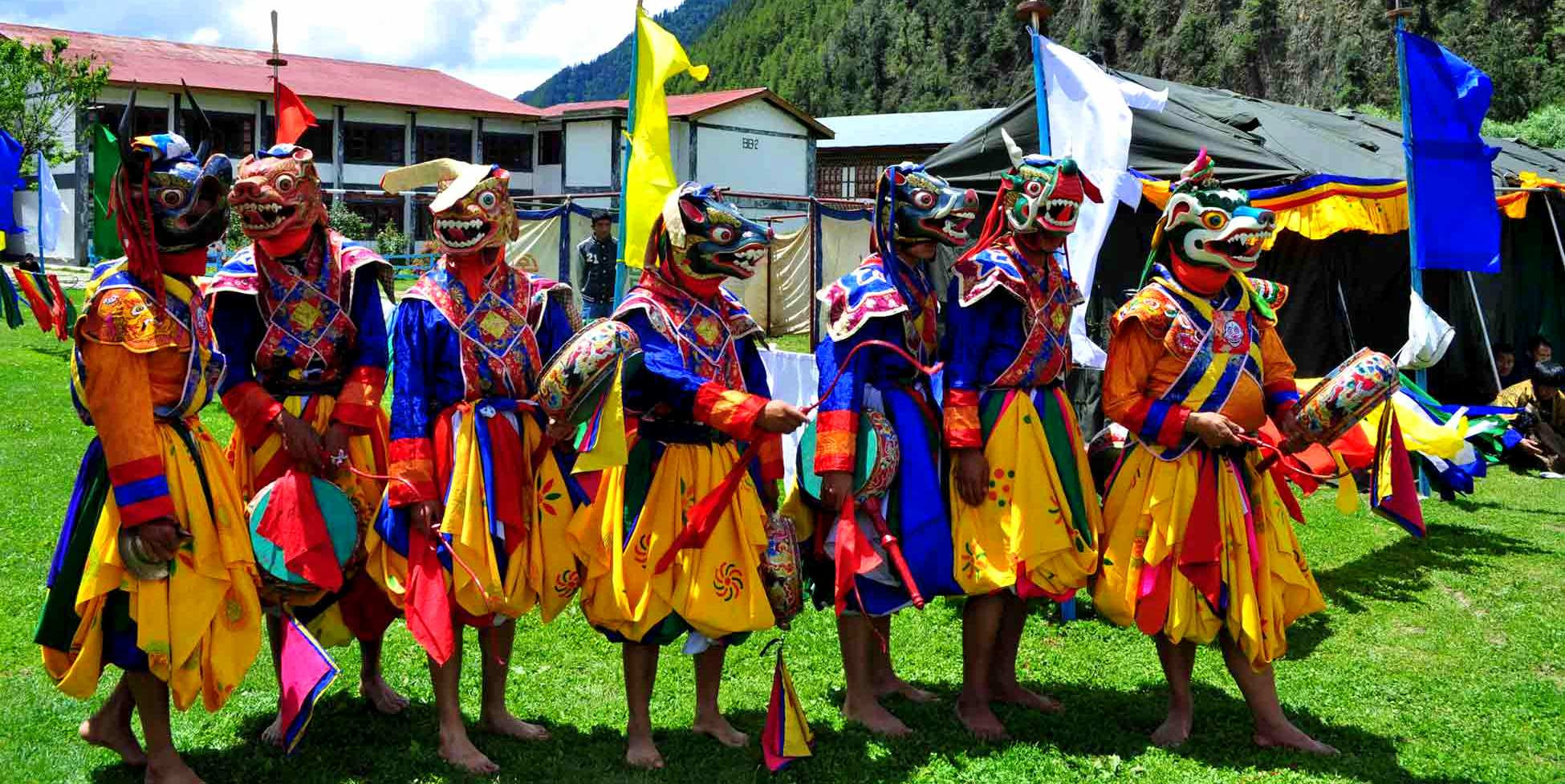
-
Haa Summer Festival: Taking place in the picturesque Haa Valley, this festival occurs in July, right in the heart of the monsoon season. It showcases the rich culture of the nomadic herders of Haa, including traditional Bhutanese sports, folk dances, and delicious local cuisine. The festival also features yak riding and archery displays, providing a deeper understanding of local traditions and lifestyles.
-
Mushroom Festival: Also held in the summer months, the Mushroom Festival in the Ura Valley celebrates the mushroom-picking season. Participants can join local experts in foraging for mushrooms in the lush forests. The festival includes tastings, where you can try dishes made from freshly harvested mushrooms, and learn about the different varieties that are native to Bhutan.
-
Korphu Festival: Located in Trongsa, the Korphu Festival offers a unique insight into the spiritual and communal practices of the central Bhutanese. This festival features traditional masked dances (cham) and rituals that are meant to bless the community, ward off evil spirits, and ensure prosperity. It's a smaller, more intimate gathering, which allows for a closer interaction with the locals and a personal experience of Bhutanese spiritual traditions.
-
Nimalung Festival: Held in the Nimalung Dratshang in Bumthang, this festival takes place in late June or early July. It is famous for its colorful cham dances and the display of a giant thongdrel (a large tapestry) that depicts Guru Rinpoche and is said to confer blessings on all who view it. The festival draws a mix of locals and a few adventurous tourists, making it an excellent opportunity for cultural immersion.
-
Religious Retreats: During the monsoon, many monasteries conduct special meditation retreats and religious teachings. These might not be festivals in the traditional sense, but they are significant cultural gatherings that focus on spiritual renewal and learning. Participating in these retreats can be a deeply enriching experience, providing insights into Buddhist philosophy and practices.
These festivals and events during the monsoon offer a less commercial, more authentic glimpse into the heart of Bhutanese culture. They are perfect for those looking to experience the genuine spirit of Bhutan beyond the usual tourist routes.
Indoor Activities
During the monsoon season in Bhutan, when the rains may make outdoor adventures less appealing, there are plenty of enriching indoor activities that can provide deep insights into the country's culture and history. These activities are ideal for those days when you prefer to stay sheltered from the weather but still wish to engage with the local environment and traditions.
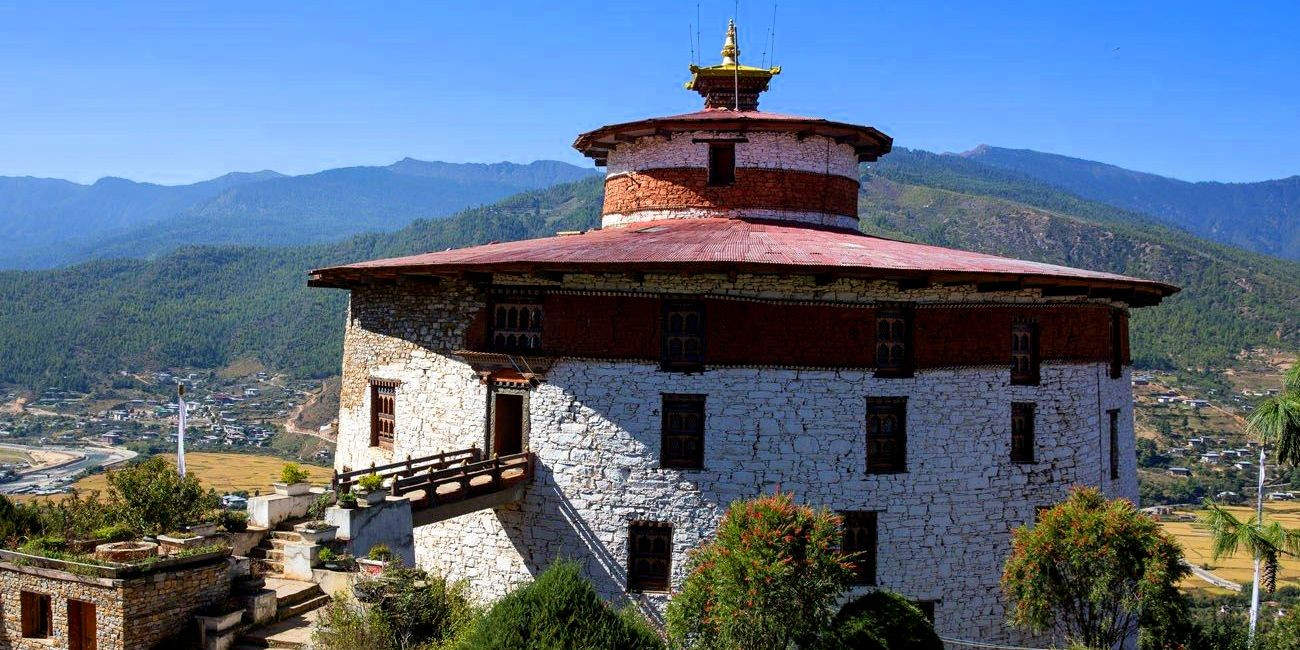
-
Museum Visits: Bhutan houses several fascinating museums that offer a glimpse into its rich cultural heritage. The National Museum of Bhutan in Paro is housed in an ancient watchtower and displays a stunning collection of Bhutanese art, including traditional costumes, thangkas (religious paintings), and masks. The Folk Heritage Museum in Thimphu provides an excellent insight into traditional Bhutanese lifestyle, agricultural practices, and rural traditions.
-
Art Galleries and Craft Centers: Visiting art galleries and craft centers can be a delightful indoor activity. The Voluntary Artists’ Studio, Thimphu (VAST), for example, is a vibrant arts center where local artists create and display modern art that reflects Bhutanese themes. Participating in workshops or viewing the artwork can be a great way to understand contemporary Bhutanese culture.
-
Cooking Classes: Engaging in a Bhutanese cooking class is not only a fun indoor activity but also a tasty one. These classes typically cover how to make traditional dishes such as Ema Datshi (chili and cheese stew) and various kinds of momos (dumplings). Learning about the spices and techniques used in Bhutanese cuisine offers an intimate taste of the culture.
-
Textile Workshops: Textiles are an important part of Bhutan's national identity, with distinct patterns and weaving techniques that vary by region. Participating in a textile workshop can be a unique experience where you learn about the traditional methods of weaving and dyeing. The Royal Textile Academy in Thimphu frequently offers workshops and live demonstrations.
-
Cultural Performances: Enjoy traditional cultural performances that are often held indoors. These can include classical Bhutanese dance, music performances, and live demonstrations of traditional storytelling. Such events are usually available in cultural centers or as part of special cultural evenings organized by hotels and tour operators.
-
Spa and Wellness Centers: For a relaxing day indoors, visit one of Bhutan's many wellness centers that offer traditional spa treatments, including the famous hot stone baths. These spas often incorporate holistic approaches using local ingredients and techniques, providing a soothing experience that is uniquely Bhutanese.
-
Library Visits: For those interested in Bhutanese literature and history, spending a few hours in a local library can be a rewarding experience. The National Library of Bhutan in Thimphu, for example, holds a vast collection of ancient texts and modern works, giving visitors a deeper understanding of the kingdom’s literary and religious traditions.
These indoor activities offer enriching experiences that can deepen your appreciation of Bhutanese culture, making your visit memorable even during the rainy days of the monsoon season.
Traditional Hot Stone Bath
A traditional Bhutanese hot stone bath, known locally as Dotsho, is an ancient practice deeply ingrained in Bhutanese culture, providing both therapeutic benefits and a unique cultural experience. This traditional bath is particularly appealing during the monsoon season when the cooler, damp weather makes the warmth of the hot stone bath even more inviting.
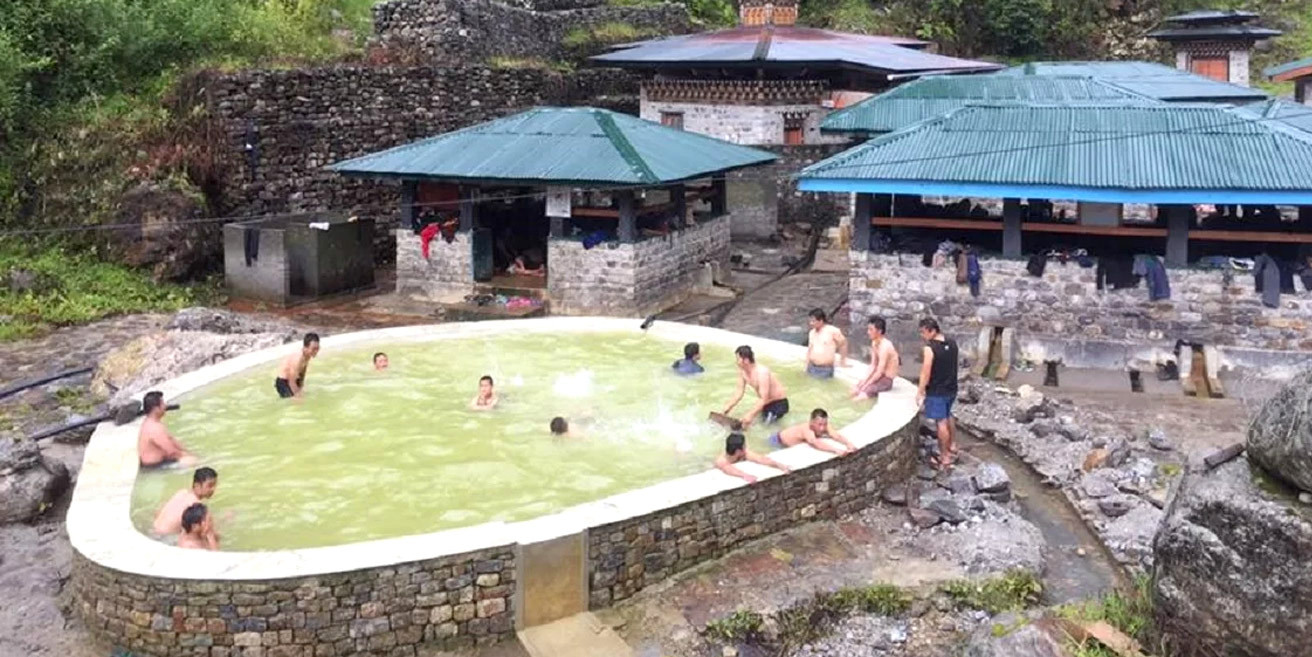
How It Works
The hot stone bath involves heating river rocks until they are red-hot and then placing them in a wooden tub filled with water. As the rocks are added, they crackle and steam, gradually heating the water. Herbs, often local Artemisia leaves, are sometimes added to the water for their aromatic and medicinal properties, infusing the bath with healing essences that are believed to relieve various ailments such as arthritis, muscle pain, and stress.
Therapeutic Benefits
The combination of heat, mineral-rich water, and herbs offers significant therapeutic benefits:
-
Muscle relaxation: The heat from the stones penetrates deep into muscle tissue, easing tension and soreness.
-
Improved circulation: The warm water helps improve blood flow, enhancing circulation and promoting healthier skin.
-
Detoxification: Sweating induced by the hot bath helps flush out toxins from the body.
-
Stress relief: The natural setting and the soothing heat offer a profound calming effect, helping to reduce stress and promote mental well-being.
Cultural Significance
The hot stone bath is more than just a spa treatment; it's a communal and familial tradition passed down through generations. It reflects the Bhutanese way of life that emphasizes harmony with nature and the importance of health and well-being. Participating in a hot stone bath allows visitors to connect with these traditional practices and gain insight into the everyday lives of the Bhutanese people.
Experience It in Bhutan
Many resorts, guesthouses, and traditional homes in Bhutan offer hot stone baths, especially in tourist areas like Thimphu, Paro, and Punakha. These baths are typically set in open-air structures or near natural surroundings, providing a serene and authentic experience. Engaging in this traditional practice is a must-do for visitors seeking to fully embrace the holistic and natural approach to wellness that is a hallmark of Bhutanese culture.
Experiencing a traditional Bhutanese hot stone bath during the monsoon season is not only a perfect way to warm up and unwind but also provides a deeper understanding and appreciation of Bhutan’s rich cultural heritage.
Photography
Photography in Bhutan, especially during the monsoon season, offers an array of unparalleled opportunities to capture the dramatic and lush landscapes that define this Himalayan kingdom. The rain brings a vibrant renewal to the forests, mountains, and valleys, creating scenes of vivid greens and dramatic cloud formations that are a dream for both professional photographers and enthusiastic amateurs.
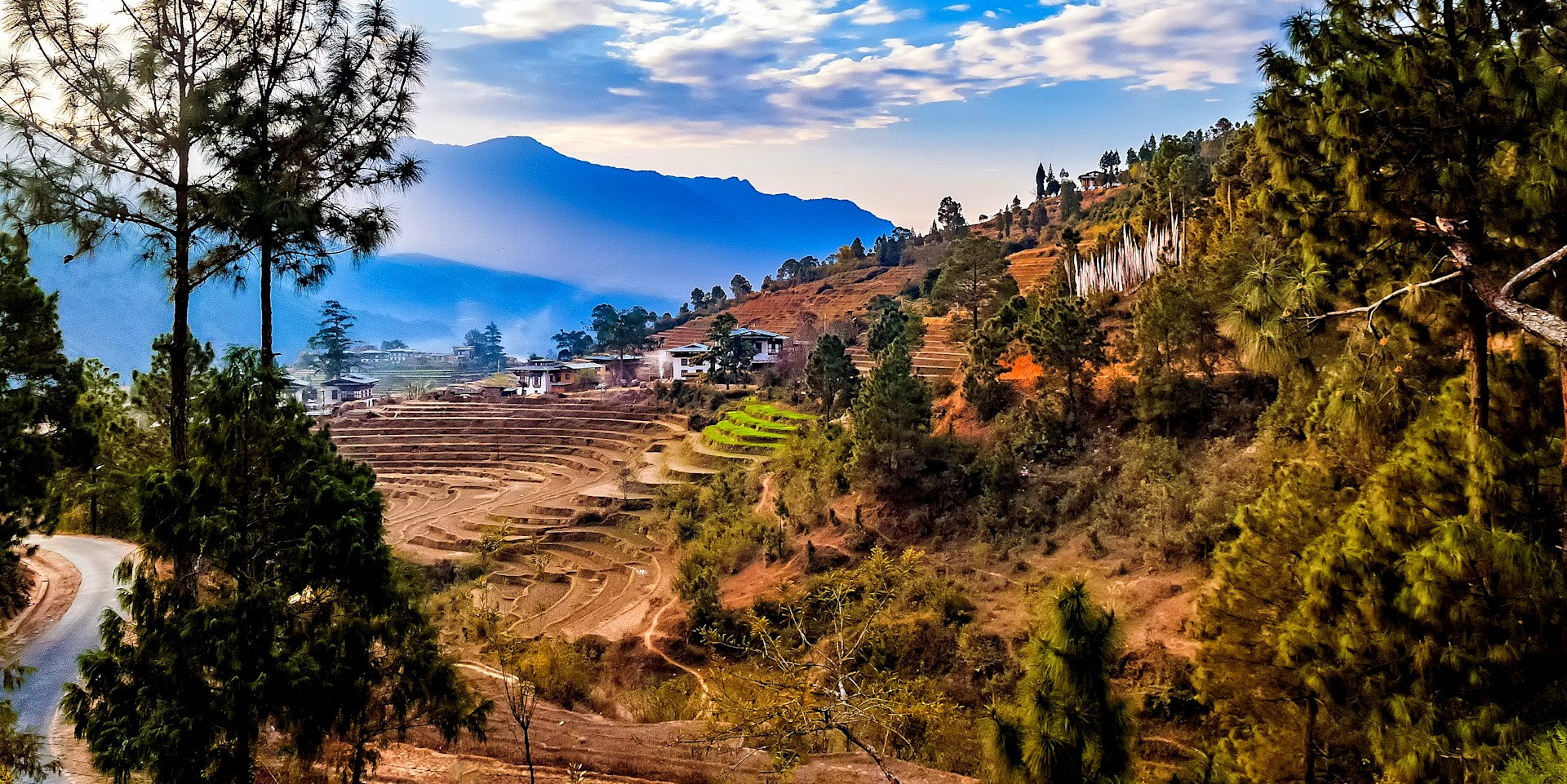
Best Subjects for Monsoon Photography in Bhutan
-
Lush Landscapes: The monsoon rains transform Bhutan's already beautiful scenery into a verdant paradise. Rolling hills and valleys carpeted in green and enveloped in mist present a spectacular subject for landscape photography.
-
Architectural Elements: Bhutan's unique and intricate architecture, including dzongs, monasteries, and traditional houses, looks even more mystical under the monsoon skies. The play of light and shadow, along with the misty background, can add a magical quality to architectural shots.
-
People and Culture: Capturing the daily life of Bhutanese people during the monsoon can tell powerful stories. Whether it's monks at prayer in the monasteries, locals at work, or children playing in the rain, these moments provide a deep insight into the life in Bhutan.
-
Flora and Fauna: The monsoon season also brings life to Bhutan's diverse flora and increases the chances of spotting fauna. Photographing the blooming flowers, especially the wild orchids and rhododendrons, or the occasional wildlife in their natural habitat can be quite rewarding.
-
Waterfalls and Rivers: With the increased water flow, Bhutan’s numerous waterfalls swell and become more majestic. Capturing these dynamic water bodies, from serene streams to powerful waterfalls, provides exciting challenges and beautiful results.
Tips for Monsoon Photography in Bhutan
-
Protect Your Gear: The rainy, humid environment demands extra care for your camera and lenses. Waterproof covers or bags are essential to protect your equipment from the elements.
-
Use the Right Settings: To capture the dynamic range of monsoon skies and landscapes, using a polarizing filter can help reduce glare and enhance colors. A tripod can also be helpful, especially in low light conditions typical of rainy days.
-
Embrace the Weather: Instead of waiting for the perfect sunny day, embrace the overcast conditions, which can offer soft, diffused light ideal for capturing the vibrant hues of the landscape without harsh shadows.
-
Experiment with Reflections: Puddles and wet surfaces offer creative opportunities to capture reflections of the stunning architecture and natural scenery.
-
Early Mornings and Late Afternoons: These times of day often provide the most dramatic light and cloud formations during the monsoon, ideal for capturing the essence of Bhutan's enchanting landscapes.
Photography in Bhutan during the monsoon not only challenges your skills but also rewards you with shots of extraordinary beauty and uniqueness. It's a time when the kingdom reveals its most intimate and breathtaking aspects, perfect for photographers looking to add depth and drama to their portfolios.
Cooking Classes In Bhutan
Participating in Bhutanese cooking classes during the monsoon season offers a delightful and engaging way to dive into the rich culinary traditions of Bhutan, away from the rain. These classes provide a hands-on experience with the unique flavors and techniques of Bhutanese cuisine, making them a perfect indoor activity for food enthusiasts.
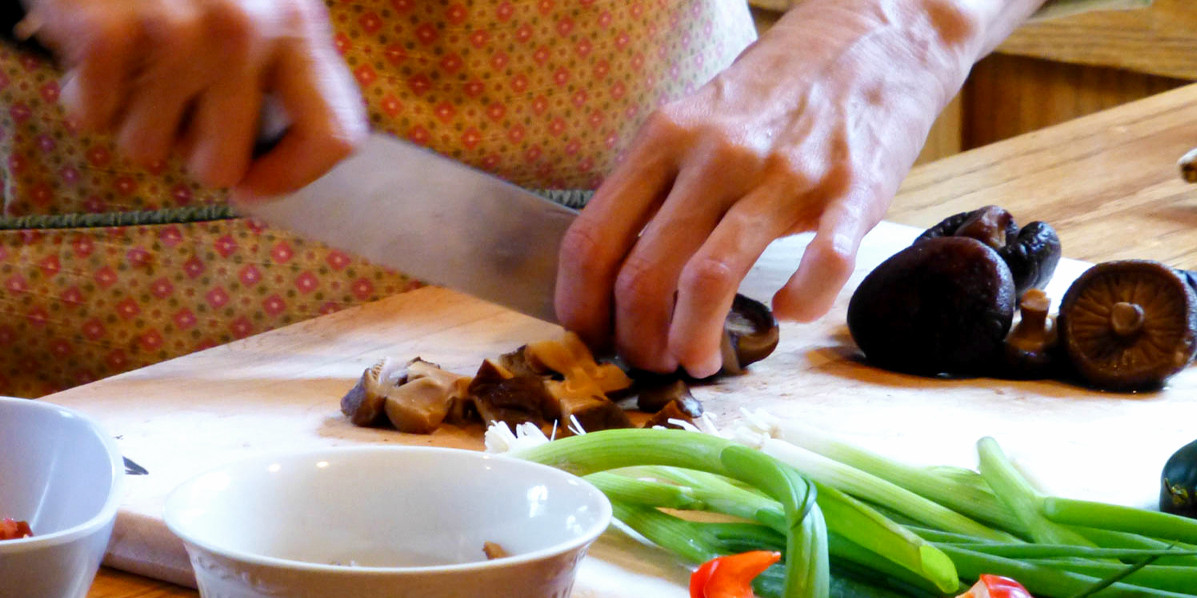
What You'll Learn
Traditional Dishes: Cooking classes typically focus on traditional Bhutanese dishes that are staples in local diets. These include:
-
Ema Datshi: This is the national dish of Bhutan, a spicy stew made from chili peppers and local cheese. It's a must-try for anyone visiting Bhutan.
-
Momos: Tibetan-style dumplings that are very popular in Bhutan, filled with either meat or vegetables and served with a spicy dipping sauce.
-
Red Rice: A Bhutanese staple, this nutty-flavored whole grain is often paired with dishes and is a unique feature of Bhutanese meals.
-
Jasha Maroo or Jasha Tshoem: A spicy chicken curry made with ginger, garlic, and sometimes tomatoes, offering a taste of the Bhutanese approach to curry.
-
Cooking Techniques: Learn about the traditional methods of cooking that are still prevalent in Bhutanese homes, including the use of traditional earthenware and wood-fired stoves, which impart distinct flavors to the dishes.
-
Use of Local Ingredients: Bhutanese cuisine is known for its use of fresh, locally-sourced ingredients. Classes often include a session on how these ingredients are grown and used, highlighting Bhutan's commitment to organic and sustainable agricultural practices.
Benefits of Taking a Cooking Class
-
Cultural Immersion: Cooking and sharing meals is an integral part of Bhutanese culture. Learning to prepare these meals provides deeper insight into the daily lives and traditions of the local people.
-
Skill Development: Acquiring the skills to cook traditional Bhutanese meals is not only fun but adds a unique set of recipes to your culinary repertoire.
-
Interactive Experience: Cooking classes often lead to lively interactions with both the instructors and fellow participants, offering a fun and communal environment.
-
Tasting and Enjoyment: The best part of any cooking class is the opportunity to taste your creations, experiencing firsthand the rich, spicy, and comforting flavors of Bhutanese cuisine.
Where to Take Cooking Classes
Cooking classes can be found in various locations across Bhutan, especially in tourist-friendly areas such as Thimphu, Paro, and Punakha. Many hotels and guesthouses offer these classes as part of cultural programs designed for travelers. Additionally, specialized culinary schools or local homes may also host sessions, providing a more authentic experience.
These cooking classes are perfect for those rainy days during the monsoon when outdoor activities might be limited. They not only fill your day with warmth and fun but also leave you with memorable skills and stories to bring back from your travels.
Monsoon Trekking
Monsoon trekking in Bhutan offers a unique set of challenges and rewards, making it an appealing adventure for those who don't mind a bit of rain and mud for the sake of experiencing the lush landscapes and vibrant ecosystems that come to life during this season. While the monsoon can make some popular treks less accessible due to heavy rains and potential landslides, there are still several trails that are viable and offer breathtaking views and a solitary trekking experience, often absent during the peak tourist seasons.
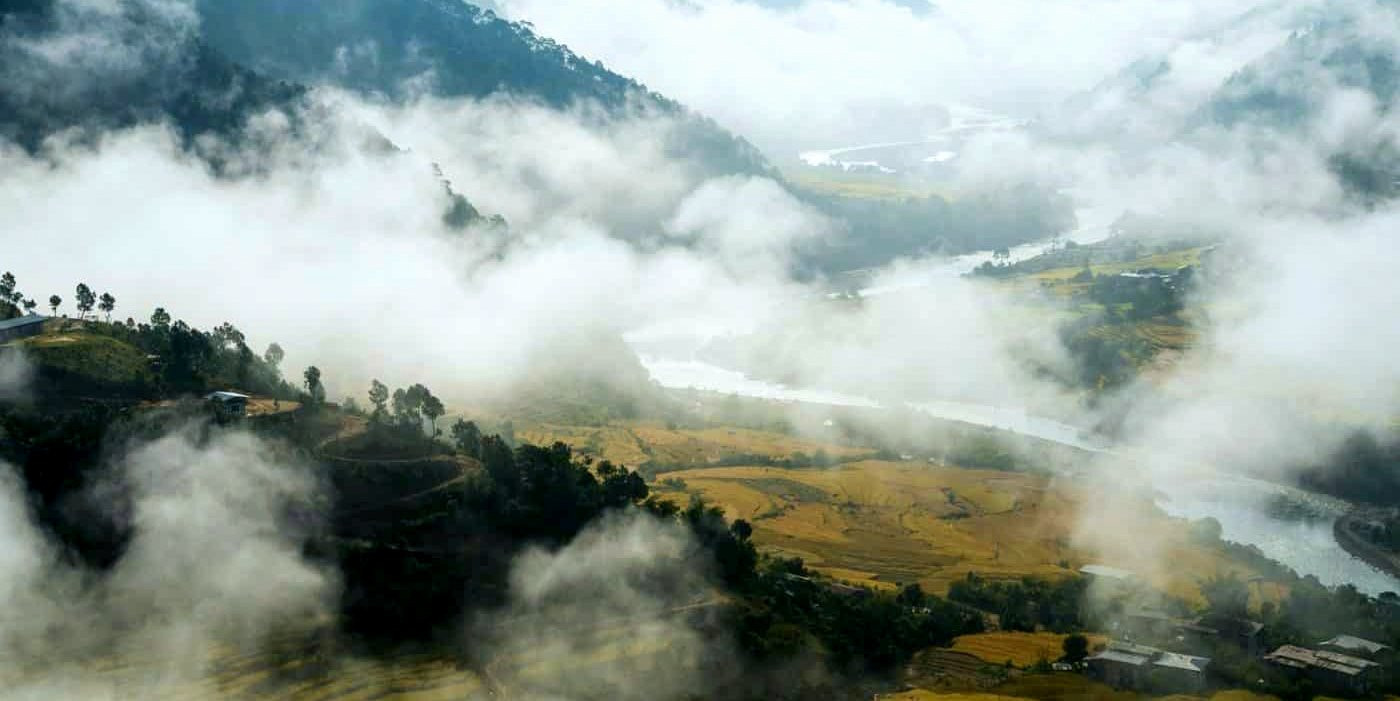
Suitable Treks for Monsoon Season
-
Druk Path Trek: This is one of the most popular treks in Bhutan and is relatively shorter and less challenging, making it suitable even during the monsoon. The trail connects Paro and Thimphu and passes through a gorgeous landscape that includes blue pine forests, high ridges, and pristine lakes. The cloud cover and mists can add a mystical element to the scenery.
-
Bumthang Cultural Trek: This trek is ideal during the monsoon as it traverses lower altitudes compared to other high-altitude treks in Bhutan. It offers a blend of cultural and natural exploration, with visits to ancient temples, monasteries, and through villages that showcase the rich Bhutanese heritage.
-
Gangtey Trek: Another low-altitude trek, the Gangtey Trek is feasible during the monsoon and provides stunning views of the Phobjikha Valley, famous for its scenic splendors and the black-necked cranes that visit during the winter months. The valley is exceptionally beautiful in the monsoon with lush green landscapes and blooming flowers.
Tips for Monsoon Trekking
-
Preparation is Key: Ensure you are well-prepared with waterproof gear, including a sturdy raincoat, waterproof backpack covers, and trekking boots with good grip.
-
Hire a Local Guide: Navigating trails during the monsoon can be tricky. Local guides not only provide valuable navigation help but also enrich your trek with insights into the local culture and natural environment.
-
Check Weather and Trail Conditions: Always check the latest weather forecasts and seek local advice on trail conditions. Avoid areas known for landslides or heavy flooding.
-
Pack Light and Right: Carrying a light backpack can make trekking easier, especially on slippery paths. Include quick-dry clothing and layers to adjust to the fluctuating temperatures.
-
Embrace the Elements: Part of the charm of monsoon trekking is experiencing the raw nature of Bhutan. Embrace the wet conditions and enjoy the unique sights and sounds that come with the rains.
Safety Considerations
While monsoon trekking can be exciting, it also comes with increased risks. Paths can be slippery, rivers can swell quickly, and visibility can sometimes be low. It is crucial to prioritize safety, stay informed about the weather, and always trek with a companion or group.
Monsoon trekking in Bhutan is not for every traveler but for those looking for adventure amid the natural beauty heightened by the rains, it offers an unforgettable experience. With the right precautions and preparations, trekking during this season can reveal a side of Bhutan less seen, filled with lush greenery, flowing waterfalls, and a serene ambiance that is hard to match.
Tips for Things to do in monsoon in Bhutan
Traveling to Bhutan during the monsoon season can be a magical experience, with its landscapes flourishing in vibrant greenery and a unique atmosphere enveloping its majestic mountains and serene valleys. However, it also requires some planning and consideration to make the most of your visit. Here are some tips for enjoying Bhutan during the monsoon:
Pack Appropriately
-
Waterproof Gear: Essential items include a good quality waterproof jacket, waterproof pants, and covers for your backpack. These will keep you dry and comfortable while exploring.
-
Layered Clothing: The weather can be unpredictable, so wearing layers will allow you to adjust to changing temperatures easily.
-
Durable Footwear: Waterproof hiking boots with good grip are crucial, especially if you plan to go trekking, as trails can be slippery.
Plan Indoor Activities
-
The monsoon season is a great time to explore Indoor Activities Bhutan, such as visiting museums, art galleries, and cultural centers. This can include the National Museum, the Folk Heritage Museum, or attending a traditional mask dance performance inside a dzong.
-
Participate in Bhutanese Cooking Classes or try the Traditional Bhutanese Hot Stone Bath for a more relaxing and culturally immersive experience.
Attend Monsoon Festivals
- While the major festivals occur in other seasons, smaller local Bhutan Monsoon Festivals still provide a great opportunity to experience Bhutanese culture and traditions firsthand. These festivals are less crowded, offering a more intimate experience.
Flexible Itinerary
- Monsoon weather can be unpredictable, with sudden showers and changes in weather conditions. Keep your schedule flexible to accommodate changes due to weather. Having a couple of backup plans is always a good idea.
Capture the Beauty
- Monsoon brings out a different kind of beauty in Bhutan, with clouds setting a dramatic backdrop against lush landscapes. Photography in Bhutan Monsoon can be exceptionally rewarding, but make sure to protect your camera equipment from the rain.
Travel with a Guide
- Navigating Bhutan during the monsoon can be more challenging, and having a local guide can help in understanding the best places to visit during this time. Guides can provide insights into safely enjoying the monsoon and understanding local weather patterns.
Health Precautions
- The monsoon season can increase the likelihood of mosquitoes and the spread of colds and flu. Pack mosquito repellent and basic medications, and drink only bottled or purified water to avoid health issues.
Enjoy the Scenery
- Despite the rain, the monsoon is a time when Bhutan’s natural beauty is at its peak. Valleys are lush and waterfalls are at their most majestic. Even a simple drive through the countryside can be a breathtaking experience.
With these tips, you can fully enjoy the unique charms of Bhutan during the monsoon season, experiencing its beauty and culture in a serene, verdant setting.
Exploring Bhutan during the monsoon offers a unique opportunity to experience its mystical beauty and rich culture in a serene setting. From participating in local festivals and cooking classes to trekking through lush landscapes and capturing stunning photographs, the monsoon season allows travelers to see a different side of this Himalayan kingdom. With the right preparation and a flexible itinerary, you can enjoy the vibrant greenery, traditional activities, and tranquil ambiance that define Bhutan in the rains. This season transforms the country into a picturesque retreat, perfect for those looking to immerse themselves in nature and culture away from the typical tourist paths.
FAQs for Things to do in monsoon in Bhutan
Q: Is it safe to travel to Bhutan during the monsoon?
A: Yes, it is safe to travel to Bhutan during the monsoon, but it is essential to be prepared for rainy weather. The infrastructure is generally good, and with the right precautions, like wearing appropriate clothing and being flexible with your travel plans, you can enjoy a safe and fulfilling trip.
Q: What are the best activities to do in Bhutan during the monsoon?
A: The monsoon season is perfect for indoor activities like visiting museums, attending cooking classes, and enjoying spa treatments like the traditional Bhutanese hot stone bath. Outdoor enthusiasts can still enjoy trekking on certain trails designed for monsoon conditions and exploring the lush landscapes that are particularly beautiful during this time.
Q: Will I be able to attend any festivals in Bhutan during the monsoon?
A: Yes, there are several local festivals that take place during the monsoon season. While they may not be as grand as the popular spring and autumn festivals, they offer a more intimate experience of Bhutanese culture and traditions.
Q: What should I pack for a monsoon trip to Bhutan?
A: Packing waterproof clothing, including a sturdy raincoat, waterproof pants, and shoes with good grip, is essential. Additionally, bringing insect repellent, a waterproof bag for electronics, and quick-dry clothing will help you stay comfortable.
Q: How does the rain affect trekking and outdoor activities?
A: Rain can make trekking trails slippery and more challenging, so it is important to have suitable gear and possibly a local guide. Some treks are better suited for the monsoon, offering spectacular views of the landscape, lush with greenery and waterfalls.
Q: Are there any health concerns I should be aware of during the monsoon in Bhutan?
A: The monsoon can increase the presence of mosquitoes and the risk of colds and respiratory infections. It’s advisable to carry mosquito repellent and basic medicines for common ailments. Always drink purified or bottled water to avoid waterborne diseases.
Q: Can I participate in photography during the monsoon?
A: Absolutely! Monsoon brings dramatic cloud formations, vibrant greenery, and misty scenes that can be spectacular for photography. Protecting your camera from moisture with waterproof cases or bags is crucial.
For the Nepal tour, please click here.
If you are looking for different kinds of Nepal Tours or Trekking Packages, feel free to contact us.
